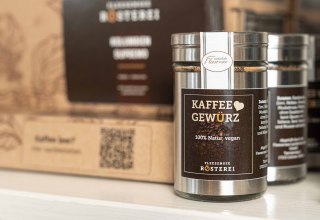The Protestant church is a listed church building in Poppentin, a district of the municipality of Göhren-Lebbin. The church, a rectangular fieldstone building from the 13th century, is one of the oldest churches in the region.
The old church was surrounded by a farm and had its own parsonage. Today the Lutheran church is Filia zu Sietow. In 1802 there were three more farms and a school next to the vicarage. An old cobblestone road led from Poppentin through Kirch Poppentin to Wendhof.
Of the original 13th century church, the cornerstones of hewn granite are still preserved. Around 1820 the walls of the nave were renewed in brick. There are pointed-arched windows in the walls, which are divided in the chancel area by smaller, five-part windows with intermediate bars. The flowery stained glass windows are striking. The west tower, built in the style of plaited Gothic, bears the date 1822 on its front. The portal in the basement remained masoned in fieldstone. Its upper floor was renovated in brick. The walls are divided by sound openings, which were set into pointed arch screens. Its flat pyramidal roof was covered with tiles. During the restoration of the church in 1883, the interior was also renovated and a wooden barrel vault was inserted in the central part of the interior. The simple interior decoration was kept in the neo-Gothic style. In the tower hangs a small bronze bell by the Wismar master Albrecht. The bell by Carl Illies is no longer there. During the renovation work from 2000 to 2002, the roof was re-roofed.
The church and cemetery are framed by a fieldstone dry-stone wall. A listed sculpture is located at the grave of Frieda Glantz. In the back of the cemetery is the tomb of the Tiele-Winckler family, an 1890 copy of the Blessing Christ by Danish sculptor Bertel Thorvaldsen (1770 - 1844). The original, made of marble, is in the Church of Our Lady in Copenhagen. The 3.50 meter tall copy made of zinc casting in galvanic copper plating was severely damaged by erosion after more than 100 years and was in danger of toppling over. The Rotary Club Waren / Müritz, together with many sponsors, raised a total of 25,000 euros to realize the restoration of the monument, including the pedestal and metal fence. After extensive restoration, the plant now shines again since 16.05.2013 in old splendor. It is regularly maintained by the Rotarians.


























